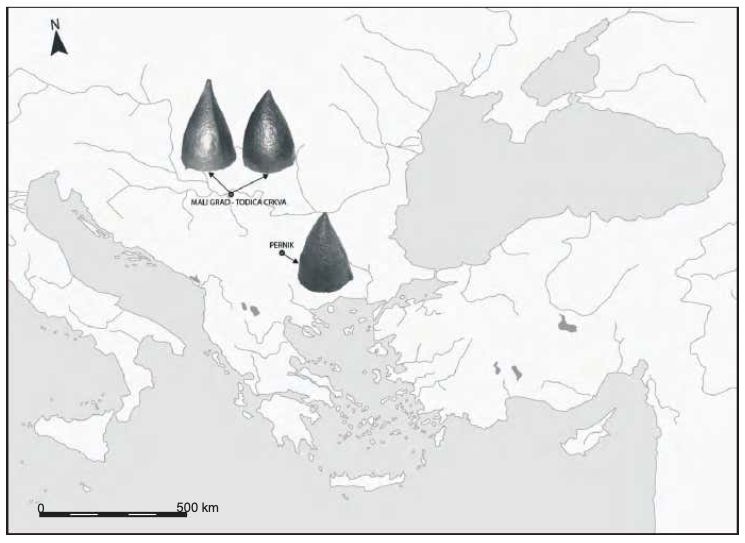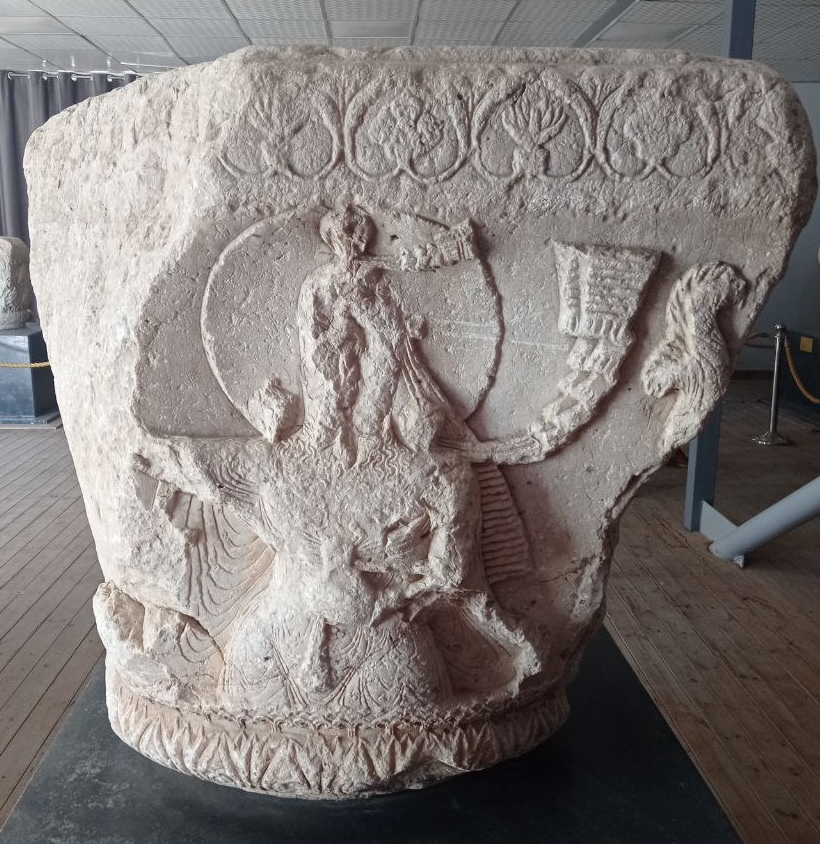And here is a depiction of Byzantine soldiers wearing this type of helmet, from the 12 century incensory, most likely made in Constantinople and currently in St Mark’s Cathedral, Venice, Italy... 

The helmet was found in the rectangular field called "mali grad" (small city) 🙂 which is where the Byzantine fort once stood... 



The field is in the village of Braničevo Once a very important Byzantine border fortress and the centre of a doukaton (duchy). It's name comes from from the Slavic root "bran" (defend)
Byzantines called it Branitzoba (Βρανίτζοβα) or Branitza (Βρανίτζα)...
Byzantines called it Branitzoba (Βρανίτζοβα) or Branitza (Βρανίτζα)...

This Phrygian type helmet is one of 3 such helmets discovered in the Balkans so far, all dated from the same period, 12th century... 

A lot more very interesting information about this archaeological site, the continuity of the use of Phrygian type helmets in the Eastern Roman Empire, and its spread to the west by Normans can be found in this article academia.edu/41423491/THE_P…
Mosaic from the St Mark’s Cathedral, Venice, Italy, second half of the 12th century, "St Peter in front of Herod Antipas". Soldiers wearing the same Phrygian type helmet. They look like Elves from Lord of the rings...🙂 

• • •
Missing some Tweet in this thread? You can try to
force a refresh


























